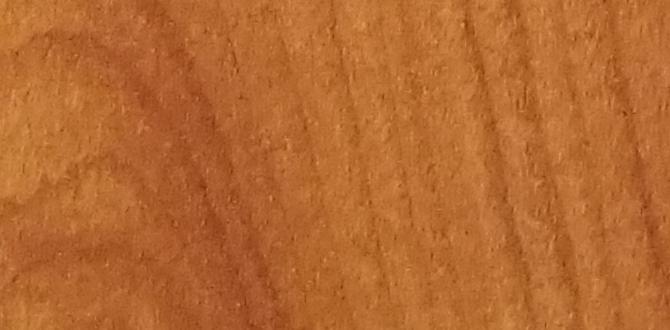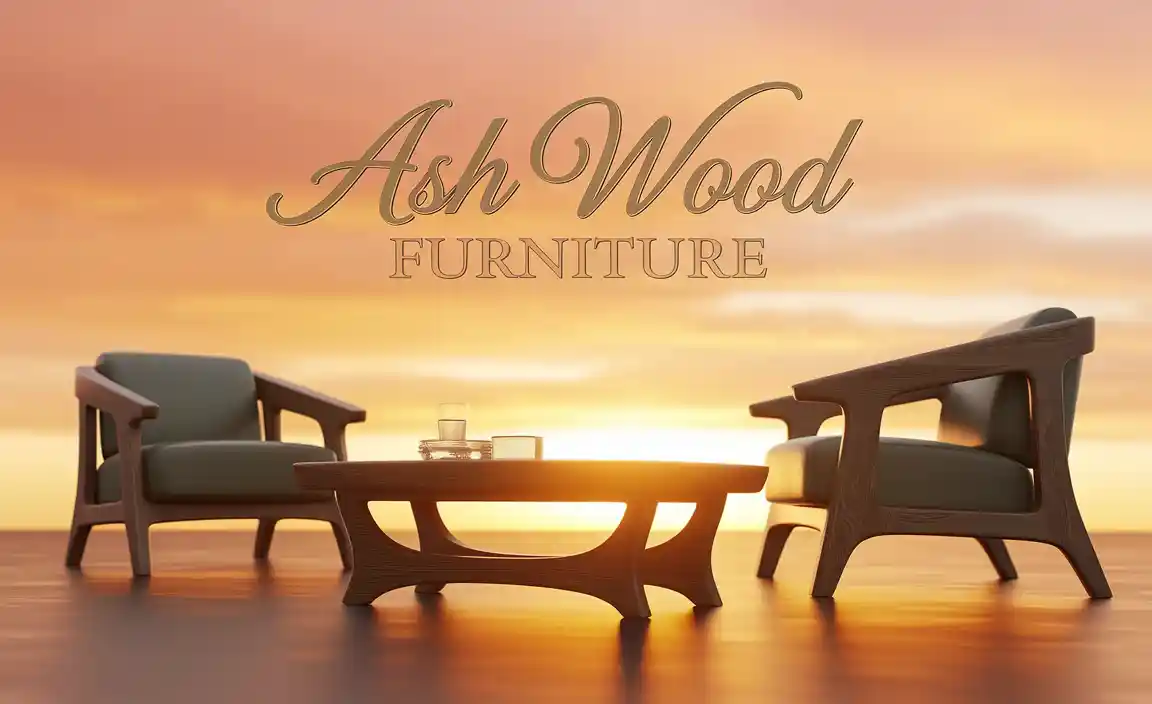Have you ever thought about changing your floors? You might wonder whether to choose wood flooring or vinyl. Both options have their own charm. But which one is better for your home?
Wood flooring gleams with natural beauty. It can make your room feel warm and inviting. On the other hand, vinyl comes in many colors and patterns. It can look just like wood but is often easier to clean. Isn’t it fascinating how different flooring can change the feel of a space?
Here’s a fun fact: wood can last for decades if cared for. Yet, vinyl is often more affordable and can be quicker to install. So, what matters more to you: style, price, or durability?
In this article, we will explore wood flooring versus vinyl. Together, we can find out which option is the best fit for your needs!
Table of Contents
Wood Flooring Vs Vinyl: A Comprehensive Comparison Guide

Wood Flooring vs Vinyl
When choosing between wood flooring and vinyl, consider your needs. Wood flooring offers timeless beauty and great durability. It can last for decades and adds value to your home. On the other hand, vinyl is often cheaper and easier to install. It resists moisture and comes in stylish designs to mimic wood. Did you know that many people prefer vinyl for its comfort underfoot? Weigh these options carefully to find what fits your lifestyle best!
Understanding Wood Flooring
Definition and types of wood flooring (solid vs. engineered). Benefits of wood flooring (aesthetics, durability, home value).
Wood flooring is a stylish choice for homes. It comes in two main types: solid and engineered. Solid wood is made from one piece of timber, while engineered wood combines a thin layer of hardwood over layers of plywood. Both types look fabulous! The benefits of wood flooring include great aesthetics, long-lasting durability, and they can even boost your home’s value. After all, who wouldn’t want to show off a shiny wooden floor at a dinner party?
| Type of Wood Flooring | Description |
|---|---|
| Solid Wood | Made from a single piece of timber; sturdy and traditional. |
| Engineered Wood | Has a layer of hardwood on top of plywood; more stable in different climates. |
The Appeal of Vinyl Flooring
Definition and types of vinyl flooring (luxury vinyl tile vs. sheet vinyl). Benefits of vinyl flooring (affordability, ease of installation, water resistance).
Vinyl flooring is a popular choice for many homes. It comes in two main types: luxury vinyl tile (LVT) and sheet vinyl. LVT looks like real wood or stone and offers style and comfort. Sheet vinyl is a large, continuous piece, easy to install and maintain. Some benefits of vinyl flooring include:
- Affordability: Vinyl is often cheaper than wood flooring.
- Easy Installation: You can lay it down quickly without much hassle.
- Water Resistance: It withstands spills and humidity well.
With vinyl flooring, you get both beauty and practicality!
What are the types of vinyl flooring?
The two main types of vinyl flooring are luxury vinyl tile (LVT) and sheet vinyl. LVT mimics stylish materials like wood or stone, while sheet vinyl offers a seamless, durable surface.
Cost Comparison
Initial costs of wood flooring versus vinyl flooring. Longterm maintenance and lifespan costs for both options.
Choosing the right flooring can affect your wallet. Here’s a simple cost breakdown for wood and vinyl flooring:
- Initial Costs: Wood flooring often costs more upfront than vinyl. This is because it is a natural product. Vinyl is cheaper and easier to install.
- Maintenance Costs: Wood needs regular care. You’ll have to clean, sand, and refinish it over time. Vinyl needs less upkeep, saving money long-term.
- Lifespan: Wood can last over 100 years, while vinyl usually lasts 10-20 years.
In the end, think about your budget today and your needs for tomorrow.
What is the average cost of wood and vinyl flooring?
The average cost of wood flooring is around $8-$15 per square foot. For vinyl, it’s about $2-$7 per square foot, making vinyl a more budget-friendly choice.
Maintenance and Care
Routine cleaning and maintenance tips for wood flooring. Routine cleaning and maintenance tips for vinyl flooring.
To keep your floors looking great, simple cleaning tips work wonders. For wood flooring, gently sweep or vacuum weekly. Use a damp mop with a wood cleaner. Avoid water pooling. For vinyl flooring, sweep and mop regularly with a mild cleaner. Spills should be wiped up quickly to prevent stains. Here are some tips:
- Use felt pads under furniture for extra protection.
- Avoid harsh chemicals and scrubbers.
- Check for scratches and fix them quickly.
How often should I clean wood and vinyl floors?
Wood floors should be cleaned weekly, while vinyl can be cleaned every few days.
Taking care of your flooring will keep it beautiful and lasting for years. Regular maintenance is fun and easy. You can even make it a family activity!
Environmental Impact
Sustainability aspects of wood flooring (renewable resources, carbon footprint). Sustainability aspects of vinyl flooring (manufacturing process, recyclability).
Choosing wood or vinyl flooring can affect the planet in different ways. Wood flooring comes from renewable resources, making it a good choice for nature lovers. Plus, it helps reduce the overall carbon footprint! On the other hand, vinyl flooring has a complicated backstory. Its manufacturing process needs lots of energy, and it’s not always easy to recycle. But, hey, it may last a long time! Here’s a quick sit-down about their impacts:
| Flooring Type | Sustainability Aspects |
|---|---|
| Wood Flooring | Renewable and decreases carbon footprint |
| Vinyl Flooring | Energy-intensive to make; tricky to recycle |
In the flooring showdown, each option has its ups and downs. Pick wisely, and you might save the Earth with every step!
Style and Design Options
Variety of styles and finishes available in wood flooring. Variety of styles and designs available in vinyl flooring.
Wood flooring offers a stunning array of styles and finishes. From rich oak to chic cherry, each type tells a unique story. You can choose glossy finishes for a traditional look or go for a matte finish to keep it modern. This variety gives your home a warm, inviting feel.
On the other hand, vinyl flooring isn’t just plain; it’s like the fun cousin at a family reunion! You can find styles that mimic wood, stone, or even tiles. It comes in countless designs, colors, and patterns! Who knew flooring could be so stylish?
| Wood Flooring | Vinyl Flooring |
|---|---|
| Rich natural finishes | Endless colors and patterns |
| Classic and elegant | Looks like wood, feels like fun! |
| Durable, yet refined | Comfortable and waterproof options |
Performance and Durability
Comparison of durability and wear resistance between wood and vinyl. Performance in different environments (moisture, pets, high traffic).
Durability and performance matter when choosing flooring. Wood flooring can scratch easily. It needs special care to keep it looking good. Vinyl is more resistant to water and pets. It is great for busy homes. Here is a quick comparison:
- Wood Flooring: Sensitive to moisture, needs maintenance, scratches easily.
- Vinyl Flooring: Water-resistant, tough against pets, holds up well in high traffic.
In summary, vinyl outperforms wood in tough conditions.
How does moisture affect wood and vinyl flooring?
Moisture can damage wood by causing it to warp. Vinyl does not have this issue, as it stays strong and stable in wet areas.
Consumer Preference and Trends
Current market trends for wood flooring and vinyl flooring. Insights into consumer preferences and demographic insights on flooring choices.
People today have different tastes when it comes to flooring. Many love the classic look of wood, while others lean toward the practical charm of vinyl. Currently, around 55% of buyers prefer wood flooring for its beauty and warmth, but vinyl is catching up! It’s easy to clean, and guess what? It can look just like wood without the tree-hugging guilt. Trendy folks enjoy mixing styles, so both choices remain popular for homes and businesses.
| Flooring Type | Consumer Preference (%) |
|---|---|
| Wood Flooring | 55 |
| Vinyl Flooring | 45 |
As tastes change, younger homeowners are exploring vinyl options. They think it’s cool to have a floor that can handle spills (kids and pets, anyone?). Many are also looking for eco-friendly materials, making this battle of flooring styles even more interesting!
Conclusion
In conclusion, both wood flooring and vinyl have their pros and cons. Wood offers natural beauty and durability, while vinyl is often cheaper and water-resistant. Think about your budget and the look you want for your space. Now, you can weigh your choices better. Consider visiting a local store or checking online to see samples of both!
FAQs
What Are The Key Differences In Durability Between Wood Flooring And Vinyl Flooring?
Wood flooring can scratch and dent more easily than vinyl flooring. It needs special care to keep it looking good. Vinyl flooring is tough and can handle spills and heavy foot traffic. It’s also waterproof, which wood isn’t. So, vinyl usually lasts longer in busy homes.
How Do The Maintenance And Cleaning Requirements Compare For Wood Flooring Versus Vinyl?
Wood flooring needs more care than vinyl. You should sweep or vacuum it often to avoid dirt. If you spill something, clean it quickly. You can use a damp mop but don’t soak it. Vinyl is easier; just wipe it down with a wet cloth or mop. It doesn’t get damaged as easily as wood.
What Are The Environmental Impacts Of Manufacturing Wood Flooring Compared To Vinyl Flooring?
Making wood flooring can hurt forests because we cut down trees. This can lead to less oxygen and harm animals’ homes. Vinyl flooring is made from plastic, which can pollute the Earth and is not biodegradable. So, while wood can be renewable, both types have environmental issues we should consider. We should choose carefully to help protect nature.
How Do The Costs Of Installation And Materials Differ Between Wood Flooring And Vinyl Flooring?
Wood flooring usually costs more than vinyl flooring. The materials for wood are often pricier. Installation can also be more expensive for wood because it needs special tools and skills. Vinyl flooring is often cheaper and easier to put down. So, if you want to save money, vinyl might be the better choice.
Which Option Offers Better Aesthetic Value And Resale Potential For A Home: Wood Flooring Or Vinyl?
Wood flooring usually looks nicer and can make your home feel more special. Many buyers prefer real wood, so it might help you sell your home for more money later. Vinyl flooring is cheaper and easier to clean, but it doesn’t always look as good as wood. If you want beauty and better resale value, wood is a great choice!






